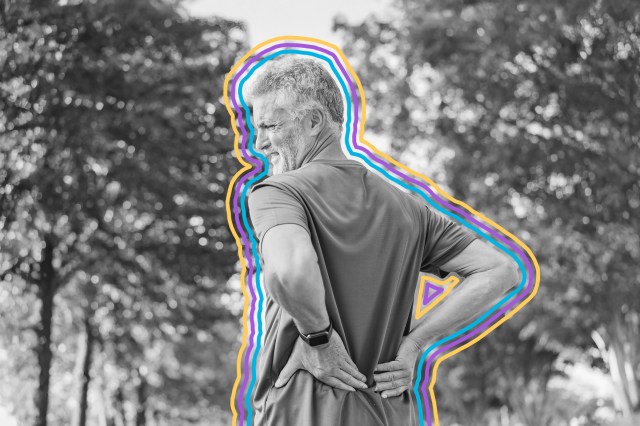
20s
Our 20s are often considered our physical prime: Muscle tone builds easily, recovery is quick, and there’s still usually plenty of resilience in both body and mind. The brain continues maturing throughout this decade — especially the prefrontal cortex, which handles decision-making, impulse control, and planning — while bone density reaches its lifetime peak, providing the foundation for long-term strength and mobility.
Collagen production, which helps skin appear plump and smooth, begins a gradual decline of around 1% per year starting in the mid-20s. Metabolism is generally strong and stable through our 20s and up to our 50s, but the habits we form in this decade, including how we eat, move, and rest, play an important role in our future health and long-term well-being.

30s
This decade often brings the first noticeable slowdown in physical resilience. Muscle mass and strength begin to decline after age 30 at a rate of about 3% to 5% per decade. For women, fat also redistributes more easily toward the abdomen due to hormonal shifts.
Skin begins to show early signs of aging as cell turnover slows and collagen production continues to gradually decrease. And reproductive and hormonal changes become more pronounced. For women, fertility begins a gradual decline and egg quality decreases. Meanwhile, shifting estrogen levels can ease menstrual symptoms and, for some, lead to more stable moods and emotional balance.

40s
The transition into middle age begins in the 40s, when many of the body’s major systems start to change in ways that are harder to ignore. For women, perimenopause may begin, triggering fluctuations in estrogen that affect everything from mood to metabolism.
Men experience a gradual decline in testosterone, leading to changes in energy, libido, and muscle retention. Research suggests men’s testosterone levels generally fall about 1% per year beginning around age 40.
Heart health becomes more important as blood pressure and cholesterol levels start to rise. Arteries stiffen and plaque accumulates starting around the mid-40s, increasing cardiovascular risk in both men and women, but regular exercise, balanced nutrition, and healthy lifestyle choices can significantly preserve heart function.
Vision changes such as presbyopia usually become noticeable in our 40s, often making reading glasses necessary. Weight can creep up more quickly, particularly around the midsection, and digestive changes can make certain foods less tolerable.
Recovery time after exercise, illness, or injury also lengthens noticeably. After age 40, height loss begins and can amount to a decrease of about half an inch per decade, depending on factors including posture, bone health, and spinal compression. However, regular physical activity and mindful posture habits can help many people maintain strength and mobility for years to come.
More Interesting Reads

50s
Aging becomes more visible and physiologically significant in the 50s. For women, menopause marks a major hormonal transition, with declining estrogen levels influencing bone density, cardiovascular health, and sometimes libido. Both men and women face a more pronounced decline in muscle mass and physical strength — for instance, daily tasks such as lifting or climbing stairs may start to require more effort.
Skin becomes drier, thinner, and more sensitive, and sun damage from previous decades may make itself known in the form of age spots. Changes in hearing may become noticeable, and dental concerns such as receding gums become more common.
Along with those physical changes, many people in their 50s report greater confidence and emotional stability than they experienced in previous decades. Regular exercise can also help strengthen the heart, preserve muscle and bone, and improve endurance and balance.
A slower metabolism means the body requires fewer calories for daily function, though it can also make weight maintenance more challenging. Bones that were strengthened through earlier decades of weight-bearing activity tend to lose density more slowly than others, preserving better structural integrity. And lifelong physical activity can help muscle fibers adapt, allowing active people to sustain better mobility and stamina than their sedentary peers.

60s
Mobility, cognition, and independence take center stage in the 60s. Balance can become less steady as changes in the vestibular system — the inner-ear network that helps with spatial orientation — increase the risk of falls.
Sleep patterns also shift, with earlier wake times and less time spent in deep, restorative stages. Taste and smell sensitivity may decrease after 60, sometimes reducing appetite or altering food preferences. Skin bruises more easily as blood vessels thin, and enamel erosion can make teeth more sensitive.
Reflexes and coordination slow, influencing reaction time during activities such as driving. Mild memory lapses and slower word recall may occur, but those are typical signs of normal aging, and many people in this decade report increased wisdom, perspective, and emotional resilience.
Many adults in their 60s experience lower levels of anxiety, depression, and stress than in previous decades, reflecting an increasing emotional resilience and stability.

70s
In our 70s, the impacts of our lifestyle choices become more pronounced. Sarcopenia — the gradual loss of muscle mass, strength, and function — becomes more dramatic, influencing walking speed and overall independence.
The immune system weakens, making infections more dangerous and recovery slower. Chronic conditions such as arthritis, diabetes, and heart disease may require increased medical attention.
Vision concerns including cataracts and macular degeneration are more common, and digestion slows, sometimes leading to reduced nutrient absorption. Bone density continues to drop, raising the risk of fracture with even minor falls. Skin becomes more fragile and prone to bruising and tears.
Height loss continues at a more rapid rate than in previous decades — over the course of our lifetime, we can lose up to 3 inches in height.
The 70s can also bring welcome relief for migraine sufferers — studies show migraine prevalence drops in later life, affecting only 5% of men and 10% of women over 70.
Many adults in their 70s also report higher life satisfaction and greater emotional contentment. Compared to 21% of people 60 to 69 and 18% of people 50 to 59, 27% of people 70 to 79 say they are “very happy.”

80s and Beyond
In our 80s and beyond, the body’s resilience and adaptability are rigorously tested as age-related changes become more pronounced, and the contrast between those who’ve maintained lifelong healthy habits and those who haven’t is often evident.
Frailty, which impacts up to 17% of older adults, is associated with a higher risk of falls and hip fractures, which are often life-altering events in this stage. Cognitive changes also become more common with age.
Lung function, which steadily declines beginning around age 25, is typically about 40% lower by age 80 compared to peak function in youth. That loss results from reduced elasticity in lung tissue and weakening of the chest wall and breathing muscles, which combine to limit breathing capacity and stamina. Meanwhile, digestion and nutrient absorption slow with age and appetite frequently decreases, making adequate intake of protein and calories essential.
Despite those challenges, many people in their 80s and beyond continue to retain cardiovascular efficiency, benefit from adaptive muscle responses, and preserve some endurance when physically active. And happiness may increase in this decade too — 34% of adults over 80 report feeling very happy with their lives.
Strong social connections, movement adapted to our ability levels, and safe environments further support health and quality of life, demonstrating that the body can continue to function effectively and maintain vitality even in our twilight years.












